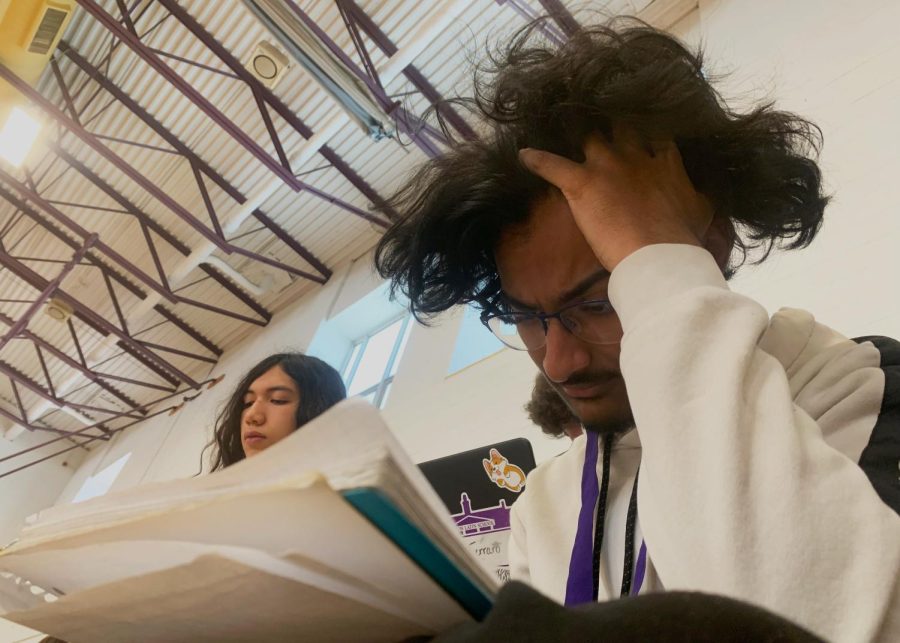The Impact of “No Impact”
“Don’t worry, it’s just one grade!” Every student has heard their teacher tell them not to worry about individual assignments or assessments, but in reality, such words discredit students’ efforts and the school environment.
Boston Latin School English teacher Ms. Sophia Campot says, “Teachers are tempted to say it because we see students stressed and we don’t want them having undue stress. […] My intentions are to make sure students don’t catastrophize. […] I say it because I want to alleviate the tension there. But I don’t say they’re ready for something or something will be easy for them unless I’m confident I’ve prepared them sufficiently.”
If teachers monitor their words and say these phrases only when they truly apply, they can build trust with students and make them feel more comfortable. Unfortunately, many teachers do not consider these factors and use reassuring statements far too often to brush aside students’ worries. False assurances result in a slew of detrimental effects on students.
One consequence is that the statements contradict the students’ beliefs. Grades are crucial to most students, and many often prioritize and place much work, worry and emphasis on them. Despite educators’ and administrators’ promotion of the concept that grades do not define students, the education system proves otherwise. Students receive four report cards a year and they are required to meet with their guidance counselor if they perform poorly academically. Grades matter to many students’ guardians, additionally, and that degree varies across households.
When teachers make statements suggesting the opposite of students’ convictions, it devalues students’ efforts and the things meaningful to them.
Belittling the reality of school and grades also downplays the weight of academics and the gravity of the school environment, which causes students to become more unsettled in an already taxing situation. Although the statements are well-intentioned, the outcome is nothing short of the opposite.
For instance, such discrediting produces divisions and disorder in students’ mindsets and generally does not ease their anxieties because students can interpret those statements and results ambiguously. Susan Chen (II) adds, “I think that it is different for every student. […] Some students may take those assignments less seriously, and some may get frustrated and more stressed than before.”
These varying responses show that many educators and students do not quite understand each other, and the dynamic disrupts their relationships, which stems from a lack of support and trust in schools. Students experience such intense and competitive environments and endure immense stress and academic pressure. Educators often express their sympathy disguised as empathy and provide short-term solutions in an attempt to briefly and quickly relieve students of their concerns, but they do not truly comprehend students’ troubles.
Even the current guidance system, which is designed for students to easily find academic and personal assistance, is still reliant on interactions with someone who acts and speaks on behalf of the faculty, not the students. Therefore, the differences in position and perspective create a lack of trust and confidentiality between teachers and students.
Moreover, it is difficult to feel like anybody is advocating for the student body, as students’ frustrations are grouped and issues are often left unsolved. This generalization is visible when teachers improperly advise students not to worry about individual assignments or assessments instead of ensuring they are well-equipped with the necessary skills and knowledge to succeed.
Improvement begins in the classroom, where teachers and students interact most often. Teachers should not use empty words to console students because students do not wish to be mindlessly comforted; they prefer to do well on assignments and understand their teacher’s expectations. If teachers hope to facilitate student success and make an improved and lasting impact on their students, they should utilize other, more helpful strategies.
Bella Choi (IV) explains, “[Teachers] have good intentions, but it’s just the wrong way of doing it. It’s much better for teachers to clearly state what needs to be studied, how much it’ll be weighted, how big it’ll be and truly help students, rather than trying to downplay the importance and telling students they’ll be fine. Students need that reassurance and clarity when it comes to assignments and the impact on their grades. […] [Teachers] should just be straight-up.”
Although this shift is a small step and will not magically resolve all existing issues, it is one step in the right direction. By doing this, teachers will build trust with their pupils and make them more confident in themselves, their academic abilities and their communication skills. More importantly, however, it will preserve school transparency instead of causing students to believe fallacies.







